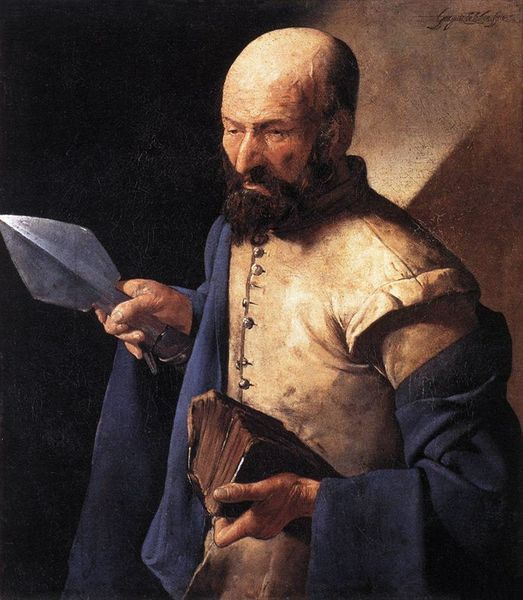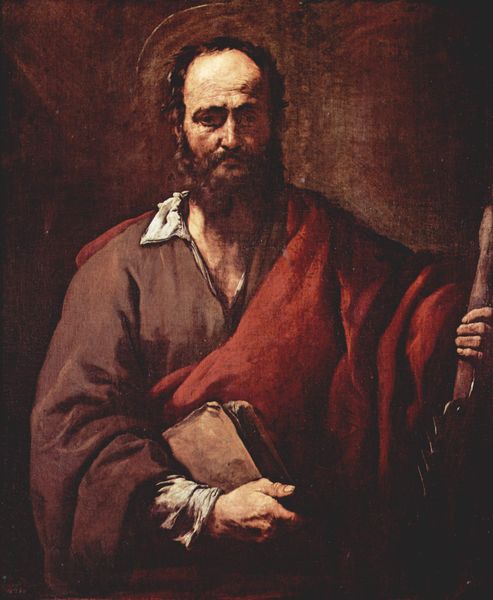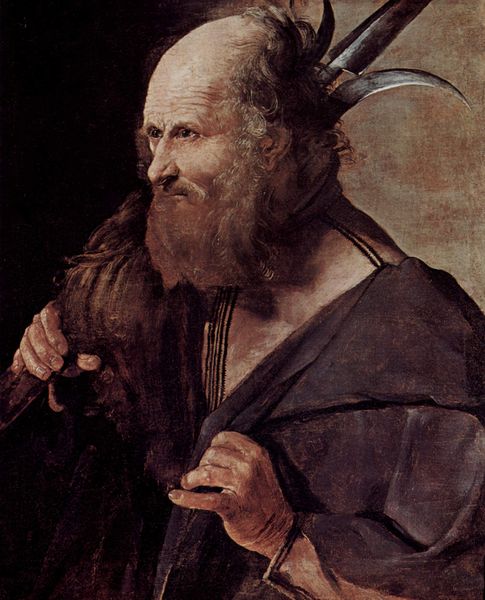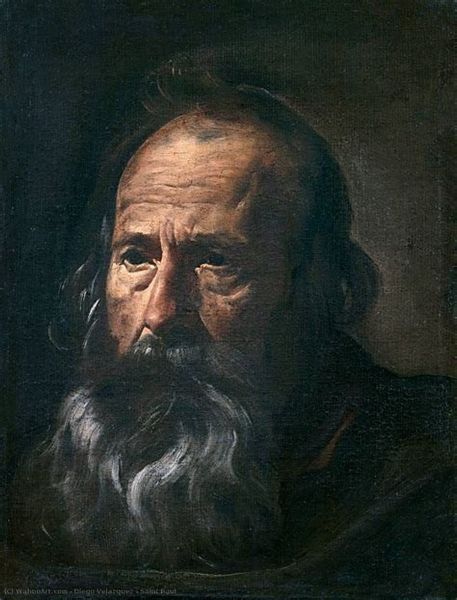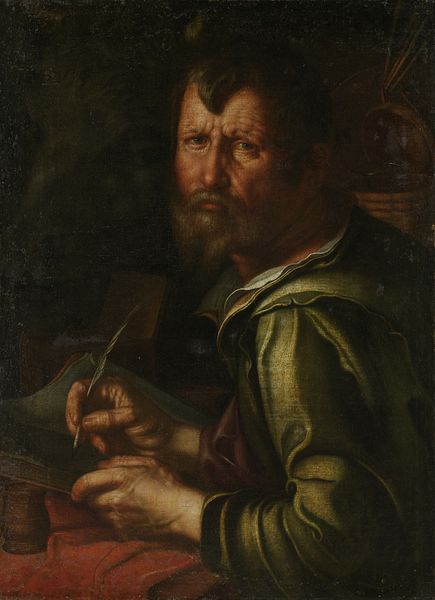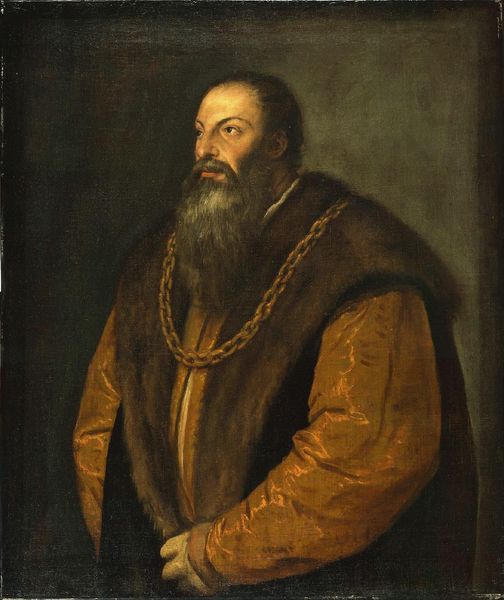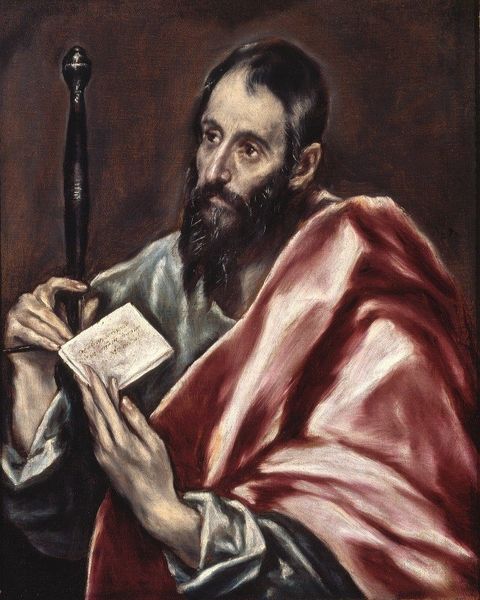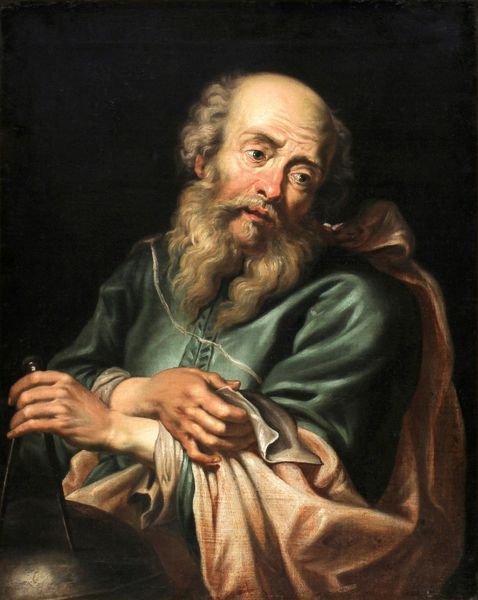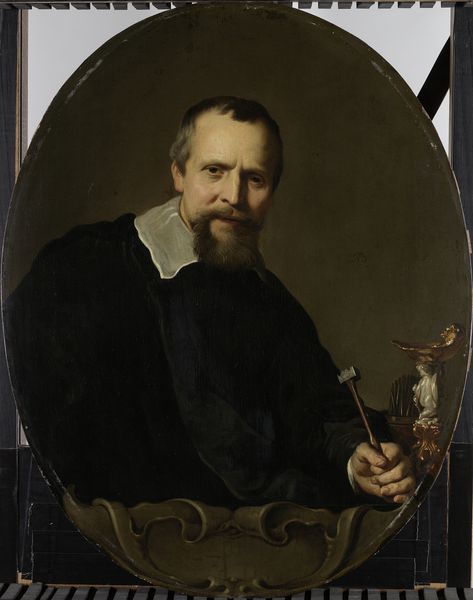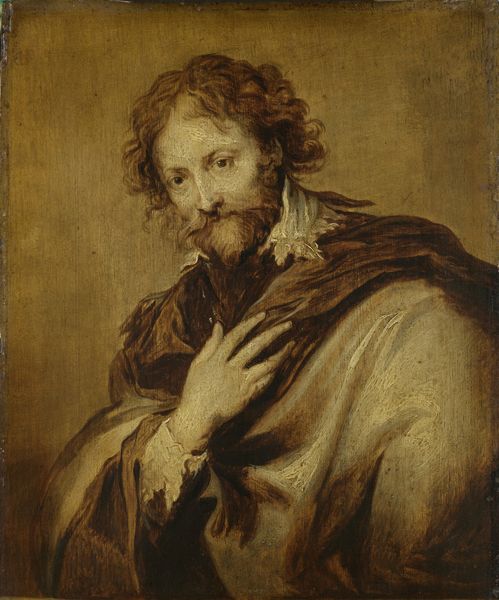
oil-paint
#
portrait
#
baroque
#
oil-paint
Copyright: Public domain
Editor: So, here we have Georges de la Tour's oil painting, "St. James the Minor," from 1620. It's quite a striking portrait; there's this stillness, almost a weary resignation in the subject's face. He clutches this staff… a rather rough-hewn thing, isn’t it? What strikes you when you look at it? Curator: Weary, yes, perfectly observed. It’s more than weariness, I think – there's an intimacy here. He feels close, reachable despite the centuries between us. This isn’t some distant saint on a gilded cloud; this is a man who knows toil. See the light, how it models the wrinkles, the downturn of the mouth… de la Tour has imbued him with an understanding, a shared empathy for the burden of existence. He’s holding the staff of his ministry – maybe that’s what brings us near? Editor: Empathy, I like that. It almost feels like a modern interpretation of a biblical figure. He feels so… present, somehow. The Baroque often feels so grandiose and ornate, but this feels so grounded. Curator: Exactly! That tension between the divine and the everyday. Think about the Caravaggesque style—that theatrical use of light and shadow. It elevates the ordinary and illuminates humanity’s sacred space within the world. He captures light perfectly. And if our friend here had known how we’d interpret his legacy hundreds of years after he painted it! That thought tickles me, makes my heart feel more hopeful. Editor: It does make you wonder what we'll make of current art, centuries from now! Thank you – I definitely have a fresh perspective now. Curator: My pleasure. Each glance at artwork opens new vistas.
Comments
No comments
Be the first to comment and join the conversation on the ultimate creative platform.
